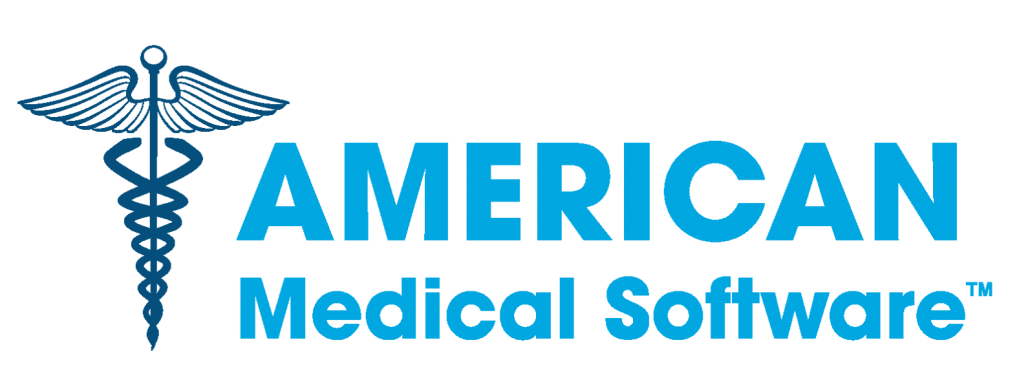How e-Health Records Improve Healthcare: A Cancer Patient’s Story
Going paperless helped Pam Crum deal with medical bureaucracy
Pam Crum was 22 weeks pregnant in October 2004 when she noticed a red rash on one breast. Her doctor thought it was simply an inflammation that sometimes occurs in lactating mothers. Over a couple of weeks, the rash worsened. Then a lump formed.
Crum was sent to a breast surgeon for a more thorough examination, and a month later she got the diagnosis: stage 3 inflammatory breast cancer.
“I was just really shocked, because all along I had been thinking it was probably some odd issue related to the pregnancy,” she recalled recently. “I remember thinking, ‘I have to really focus on beating this illness because I have two daughters.’ I knew my three-and-a-half-year-old daughter would be devastated. And, we were already so attached to the [unborn] baby, we just couldn’t imagine something happening to her. I thought, ‘I just take this day by day.’ ”
During her journey through treatment, Crum’s health care providers at Georgetown University Medical Center used the industry standard at the time, paper-based medical records. But along with a large segment of the healthcare industry over the past two years, the University transitioned to using electronic health records (EHRs).
Crum transitioned as well.
She went from filling out repetitive forms for multiple physicians and specialists and being her own courier of radiological films, to having doctors sit beside her with laptops already populated with all of her latest medical information and images.
The U.S. government is pressing all medical facilities to roll out EHRs by 2016, but the going has been slow so far. By the end of next year, 58% of small physician practices are expected to have EHR systems in place. And by 2014, the federal government wants more than half of all healthcare facilities to use EHRs.
Facilities that roll out EHRs — and prove their meaningful use, according to federal standards — can receive tens of thousands of dollars in reimbursement money under the American Recovery and Reinvestment Act of 2009. Some facilities, depending on their size, could get millions.
EHRs are also expected to promote the use of evidence-based medicine, or the use of standardized medical practices.
But, there has been pushback from physicians who at times feel a bit like data entry clerks as they must log into order-entry systems to order scans, treatments and medicines and also write up their own notes. The alternative to EHRs: paper records.
The paper chase
Crum lives in Chantilly in northern Virginia. Her insurance company required her to have in-state mammograms and MRIs, which meant she had to pick up the films and take them to Georgetown, 40 miles away in northwest Washington, D.C. Because her medication could also affect bone density, she also had to have bone scans, which also had to take place in Virginia.
If not for the willingness of her primary care physician to fax his referrals, Crum would have also had to carry those documents to each specialist she saw.
A familiar scene for Crum whenever she got to Georgetown for her checkups and chemotherapy was the crowd of other patients carrying the obligatory “huge medical folders.”
And then there were the forms.
 “Each time I went in I’d have to write down every vitamin, every dietary supplement and the medications I had taken, and was taking, the dosage, the frequency,” she said. “Having the added stress of having to track down pieces of paper or films, driving to that place and getting them to where they needed to be. It was just one more thing I had to do in a situation where I already wasn’t feeling well.”
“Each time I went in I’d have to write down every vitamin, every dietary supplement and the medications I had taken, and was taking, the dosage, the frequency,” she said. “Having the added stress of having to track down pieces of paper or films, driving to that place and getting them to where they needed to be. It was just one more thing I had to do in a situation where I already wasn’t feeling well.”
The chemotherapy drugs Crum took not only caused hair loss, but joint pain, too. Despite anti-nausea medications, she was constantly tired and achy.
At 36 weeks, Crum’s physicians induced labor and she gave birth to her daughter, Grace. While women undergoing chemotherapy during pregnancy sometimes give birth to underweight babies, Grace was perfectly healthy. There was no delay in being able to take her home.
Crum completed her chemotherapy in May 2005, and to avoid the cancer reoccurring, had a double mastectomy. Six months later, her physicians found ovarian cysts, which brought in a second oncologist, another round of radiation treatments — and more sheafs of paper records.
Crum has been cancer free since finsihing her treatment, but because of the high risk for patients who’ve had inflammatory breast cancer, she continues to visit doctors in Georgetown at least six times a year. But over the past two years, since EHRs have been rolled out, there’s been a stark difference.
“It used to be that whenever I had a mammogram or an MRI, I had to pick up the films in Virginia, take them to Georgetown, and then return them to Virginia,” Crum said. “I was doing a lot of shuttling. But now, they just send the images electronically to each of my providers. It’s fantastic. I don’t have to do anything. They also transmit my bone density scans electronically.
“Even if there would be an issue, the doctors at Georgetown will have a chance to review and study the films before my appointment,” she continued. “When I was bringing in the films myself, they would be looking at them for the first time while I was right there.”
The EHRs also allow Crum’s physicians to see what blood tests are due, and put everything on the same order for the blood draw. Prior to the EHR, Crum had to get two separate pieces of paper for the blood draws. That sometimes it meant separate trips to the lab.
EHRs improve patient outcomes
Studies have also shown that EHRs can make medical treatment more effective.
The recently published results of a study in the Cleveland area that involved more than 27,000 adults with diabetes found that those with doctors using EHRs were significantly more likely to have healthcare and outcomes that meet accepted standards than those with doctors using paper records. In addition, improvements in care and outcomes over the three-year period also proved greater among patients in EHR practices.
The study included more than 500 primary care physicians in 46 practices that are partners in a region-wide collaborative known as Better Health Greater Cleveland (Better Health), which is focused on improving care for patients with chronic illnesses.
“We were not surprised by these results,” Dr. Randall Cebul, a professor of medicine at Case Western Reserve University and the study’s lead author, said in a statement. “They were influenced by several factors, including our public reporting on agreed-upon standards of care and the willingness of our clinical partners to share their EHR-based best practices while simultaneously competing on their execution.”
 Nearly 51% of patients in EHR practices received care that met all of the endorsed standards. Only 7% of patients at paper-based practices received this same level of care. After accounting for differences in patient characteristics, EHR patients still received 35% more of the care standards.
Nearly 51% of patients in EHR practices received care that met all of the endorsed standards. Only 7% of patients at paper-based practices received this same level of care. After accounting for differences in patient characteristics, EHR patients still received 35% more of the care standards.
Additionally, almost 44% of patients in EHR practices met at least four of five outcome standards, while just under 16% of patients at paper-based practices had comparable results. After accounting for patient differences, the adjusted gap was 15 percentage points higher for EHR practices.
“These results support the expectation that federal support of electronic health records will generate quality-related returns on our investments,” said Dr. David Blumenthal, the past National Coordinator for Health Information Technology.
For Crum, because of Georgetown University’s EHRs, more than one set of eyes will be scanning her latest test results to catch any possible cancer reoccurrence. Each test she takes is combined with primary care physician checkups and specialist visits, so that “when one piece of information is combined with another piece of information, it might turn out to be significant,” she said.
“It gives me the reassurance that if I were to have a cancer reoccurrence it would be caught early on,” she said. “The earlier you detect a reoccurrence of cancer, the better the chances are of taking care of it and having it not be a life-threatening issue. It improves the efficiency and quality of medical care. There’s also less chance of information getting lost along the way.
“To me, it’s just better for everyone.”
Source: www.computerworld.com; By Lucas Mearian; November 1, 2011




Leave a Reply
Want to join the discussion?Feel free to contribute!